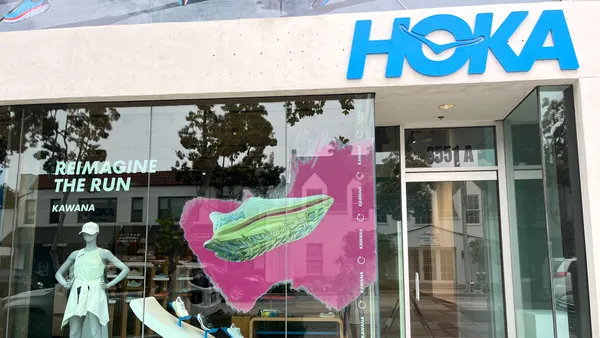Dive Brief:
-
This holiday season, most adult Americans went to a physical store (93%) and plenty (70%) headed to the mall this year, according to research from the International Council of Shopping Centers emailed to Retail Dive. More than half of them wanted to be able to see and touch items (the top reason for shopping in-store), get items immediately (48%), find better prices and promotions (37%) and avoid shipping costs (35%).
-
The winners were Target and Walmart, where 71% went to get gifts, while 40% went to traditional department stores and 24% to dollar/variety stores, according to ICSC. Total expenditure in physical stores (44%) almost doubled that of the total expenditure through Amazon (24%).
-
Click-and-collect services were popular, and helped physical stores, as 86% of those shoppers bought something they hadn't already ordered while picking up their item in the store, according to the report. Millennials were more likely to purchase additional items than any other age group.
Dive Insight:
Despite online spending this year that toppled previous records, holiday shoppers in many ways were primed to head to physical stores, so that physical retail took its fair share of what Mastercard SpendingPulse found to be a 5.1% increase in holiday sales to $850 billion, the highest number in six years.
Retailers that trimmed their stores for the season helped entice them in. Target, for example, more than doubled its holiday toy assortment and made room by a "quarter-million additional square feet" to accommodate the increased merchandise and in-store events for children and families, taking advantage of the notable absence of what for decades had been the giant in that space, Toys R Us.
Thanks to more click-and-collect offers this year, stores weren't necessarily crowded, though. While such services are not new, there was rapid adoption of it during this season: Adobe Analytics found that click-and-collect grew 47%, the biggest BOPIS year on record and the result of retailers' making it possible (and easier) for shoppers to come in for their online orders.
Not all retailers took advantage of the elevated consumer sentiment this year, however. J.C. Penney stores, for example, were lackluster, according to GlobalData Retail Managing Director Neil Saunders. The struggling retailer reported a nine-week holiday comparable store sales decline of 3.5% on a shifted basis (adjusted for the timing of the sales) or 5.4% unshifted and said that three stores will close this spring. And Macy's, after a strong Black Friday, failed to bring in shoppers consistently through the season, which Saunders warned throws a question mark over its turnaround.













